Dog-rose, planting guide and care tips
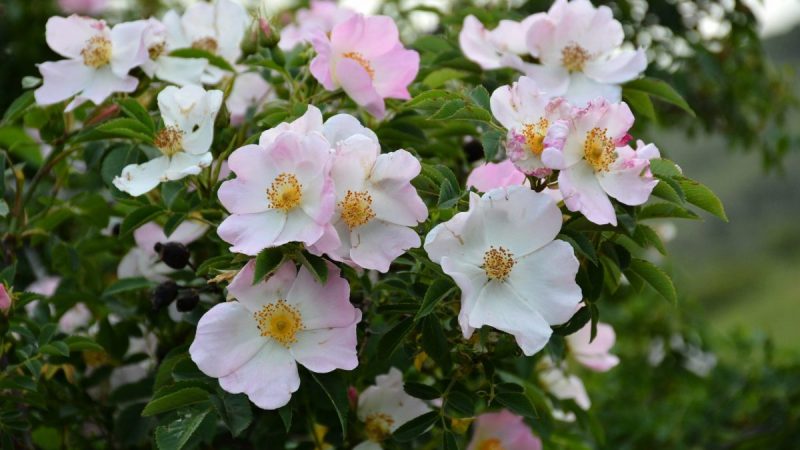
The dog-rose (Rosa canina) is a robust shrub-like type of wild rose. It is a Rosaceae family member native to Europe, North Africa, and Asia. The dog-rose may grow up to 5 metres tall and is an excellent climbing plant, growing well on a variety of structures.
The plant is made up of multiple arching stems that are coated with tiny, sharp thorns. The leaves are serrated and light green in colour. The blooms are pale pink, deep pink, or white and have a lovely aroma. A single flower has five smooth petals. This flower blooms in the late spring. Fruits are round, red or orange in colour. The fruit is edible and may be collected from September to October. They can stay on the plant throughout the winter and are quite eye-catching.
Dod-rose – varieties and cultivars
- Rosa canina ‘Assisiensis’ – this cultivar has no thorns;
- Rosa canina var. Lutetiana – has pale pink flowers and may reach a height of up to 4 metres;
- Rosa canina var. Frondosa – white-flowered cultivar with a pink core that may grow up to 4 metres tall.
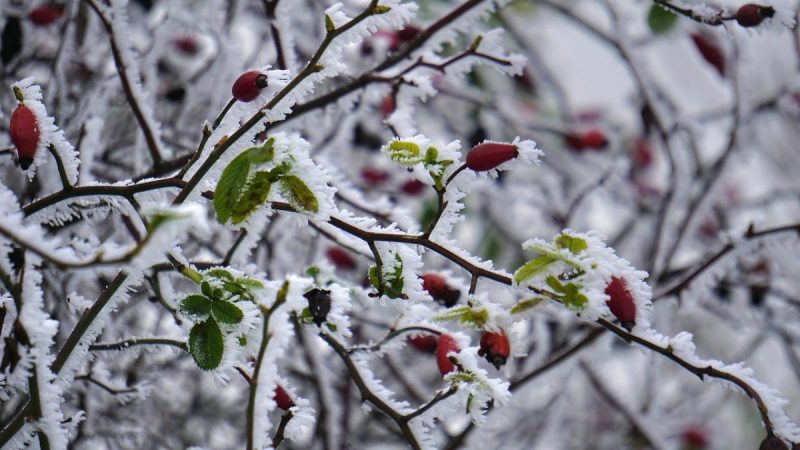
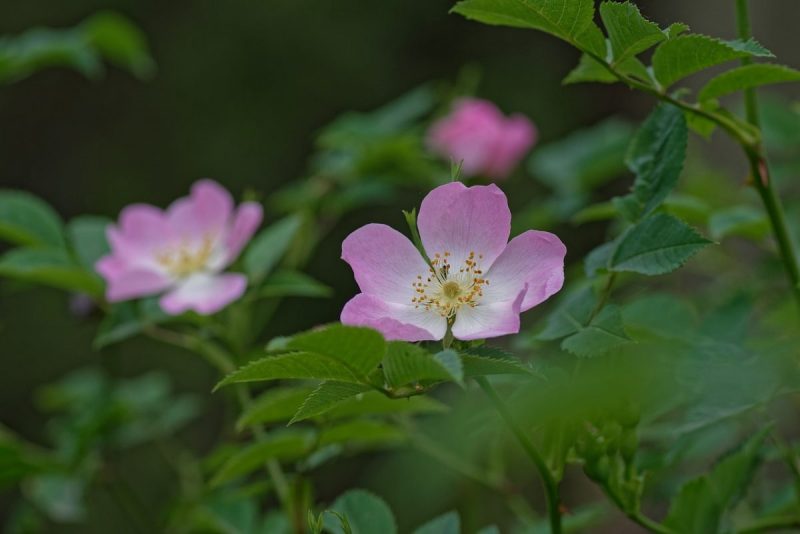
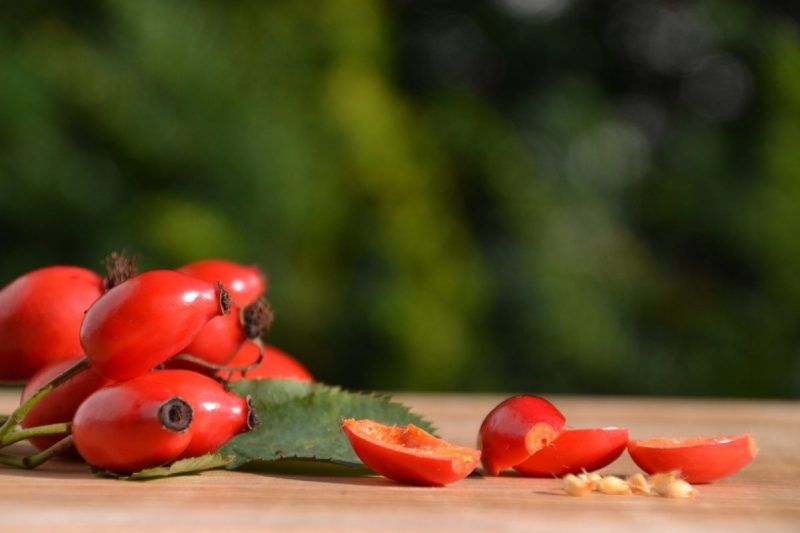
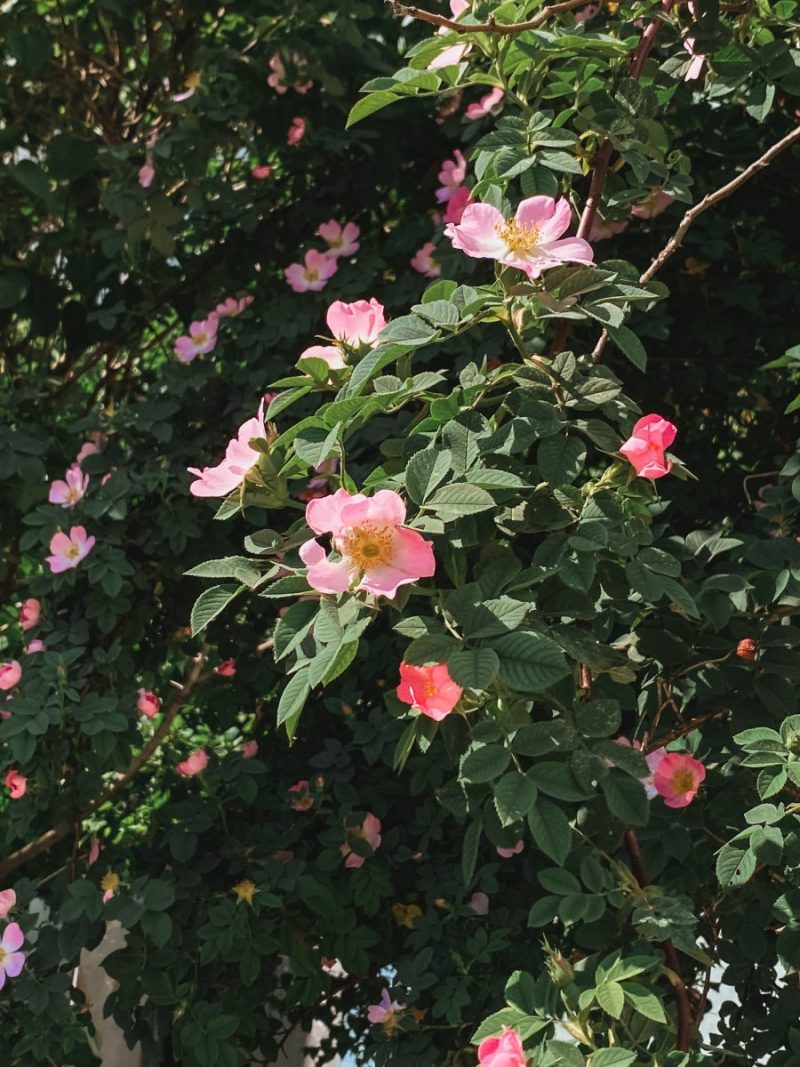
Environmental conditions
Light. It has a high light requirement and plays a significant role in the development and blooming processes. It requires at least 6 hours of direct sunlight every day, but can tolerate partial shade.
Temperature. Dog-rose is more resistant to high temperatures. It can withstand extreme weather conditions.
Humidity. Rosa canina is susceptible to a variety of fungal diseases when exposed to high levels of atmospheric humidity. It is critical to maintain enough air circulation within the bushes.
Soil. Grows in a variety of soil types (clay, sandy, humus-rich, and so on). However, it is critical that the soil allow for proper drainage, since excess water at the root level can cause root rot. the dog-rose likes neutral pH soils, although they may also thrive in slightly acidic or slightly alkaline soils.
Care tips
Watering. Watering is required on a regular basis, although excessive moisture at the root level is not tolerated. It is critical that the top 5 cm of the soil surface dry out between waterings. It is best to avoid spraying water on the leaves when watering.
Fertilisation. Regular fertilisation encourages shrub growth and flowering. A balanced fertiliser may be sprayed throughout the growth season beginning in the spring.
Recommended products
-
You can find products on a different store
Change Store -
You can find products on a different store
Change Store -
You can find products on a different store
Change Store -
You can find products on a different store
Change Store -
You can find products on a different store
Change Store -
You can find products on a different store
Change Store -
You can find products on a different store
Change Store -
You can find products on a different store
Change Store -
You can find products on a different store
Change Store -
You can find products on a different store
Change Store -
You can find products on a different store
Change Store -
You can find products on a different store
Change Store -
You can find products on a different store
Change Store -
You can find products on a different store
Change Store -
You can find products on a different store
Change Store -
You can find products on a different store
Change Store -
You can find products on a different store
Change Store -
You can find products on a different store
Change Store -
You can find products on a different store
Change Store -
You can find products on a different store
Change Store -
You can find products on a different store
Change Store -
You can find products on a different store
Change Store -
You can find products on a different store
Change Store -
You can find products on a different store
Change Store
Propagation. Dog-rose can be propagated by stem cuttings taken in autumn or by seeds (less often). Propagation by seedlings allows the new plant to retain the characteristics of the mother plant.
Cut a 15-20 cm portion from a healthy stem using sharp scissors. It may be planted in a small pot once the flowers, fruit, and leaves have been removed. The container may be moved to a bright, draught-free location. The seedlings can be placed in the garden (ideally) or in a bigger container in the spring.
Pruning. Dog-roses do not require pruning in general, although excessive stems can be removed. This is best done during the dormant season (fall or early spring). When doing these prunings, keep in mind that the shrub blooms on the stems from the previous year.
Dry, damaged, or infected parts can be removed as they occur throughout the year. Wearing protective gloves is suggested to protect yourself from thorns.
Recommended products
-
You can find products on a different store
Change Store -
You can find products on a different store
Change Store -
You can find products on a different store
Change Store -
You can find products on a different store
Change Store -
You can find products on a different store
Change Store -
You can find products on a different store
Change Store -
You can find products on a different store
Change Store -
You can find products on a different store
Change Store -
You can find products on a different store
Change Store -
You can find products on a different store
Change Store -
You can find products on a different store
Change Store -
You can find products on a different store
Change Store -
You can find products on a different store
Change Store -
You can find products on a different store
Change Store -
You can find products on a different store
Change Store -
You can find products on a different store
Change Store -
You can find products on a different store
Change Store -
You can find products on a different store
Change Store -
You can find products on a different store
Change Store -
You can find products on a different store
Change Store -
You can find products on a different store
Change Store -
You can find products on a different store
Change Store -
You can find products on a different store
Change Store -
You can find products on a different store
Change Store
Recommended products
-
You can find products on a different store
Change Store -
You can find products on a different store
Change Store -
You can find products on a different store
Change Store -
You can find products on a different store
Change Store -
You can find products on a different store
Change Store -
You can find products on a different store
Change Store -
You can find products on a different store
Change Store -
You can find products on a different store
Change Store -
You can find products on a different store
Change Store -
You can find products on a different store
Change Store -
You can find products on a different store
Change Store -
You can find products on a different store
Change Store -
You can find products on a different store
Change Store -
You can find products on a different store
Change Store -
You can find products on a different store
Change Store -
You can find products on a different store
Change Store -
You can find products on a different store
Change Store -
You can find products on a different store
Change Store -
You can find products on a different store
Change Store -
You can find products on a different store
Change Store -
You can find products on a different store
Change Store -
You can find products on a different store
Change Store -
You can find products on a different store
Change Store -
You can find products on a different store
Change Store
Dormancy period. The period of dormancy. Rosa canina tolerates cold temperatures in the winter. To protect its roots from cold, cover the soil around the plant with a layer of mulch.
Diseases and pests
The dog-rose can be attacked by aphids, spider mites, fruit lecanium, cicadas, various caterpillars. The most common diseases are: blight, anthracnose, rust, botrytis bunch rot, various spottings.
Additionally
- Both overwatering and lack of water can cause yellowing of the leaves;
- The fruits are rich in vitamin C.















































































































































































































































































































































































































































